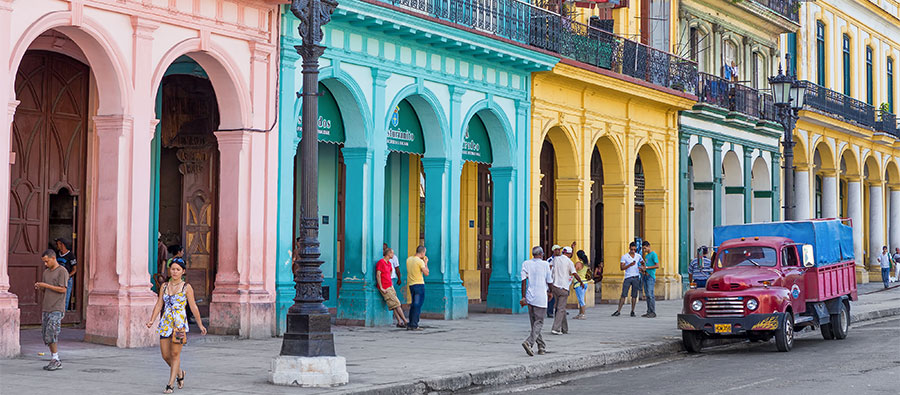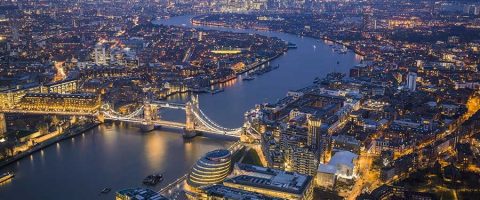Hidden Gems: Cuba – With a unique combination of tropical seascapes, mountain forests, old-world charm, jazz and rumba, the island nation of Cuba is a must on our Hidden Gems destination list.
Cuba’s vibrant culture is the result of a melting pot of indigenous, European, and African influences vividly and proudly preserved through its music, dance, literature, and art. The country is known for its soulful music, cuisine, and people who celebrate each other and welcome travellers with open arms. It’s also famous for its unique Baroque and neoclassical architecture, its fortifications, and its history as a stop on the route to the New World which garnered its capital’s idyllic city center a spot on the UNESCO World Heritage list in 1982. Founded about 1519 on the island’s north-western shore, Old Havana has maintained its remarkable character and layout; its brightly coloured buildings and vintage cars making it a firm favourite for visitors to the island. Cuba also offers visitors all the pleasures the sea has to offer, whether it be relaxing days by the beach, fishing, water sports, swimming or diving. It’s unique mixture of landscapes also provides ample opportunity for bird and wildlife appreciation.
Visit the official Cuba tourism website here.
Cuba has long been considered an oasis of creativity, vitality, and peace by many. The Nobel prize winning American novelist Ernest Hemingway fell in love with Cuba the moment he stepped foot on shore. He resided there for more than twenty years – longer than he lived anywhere else.
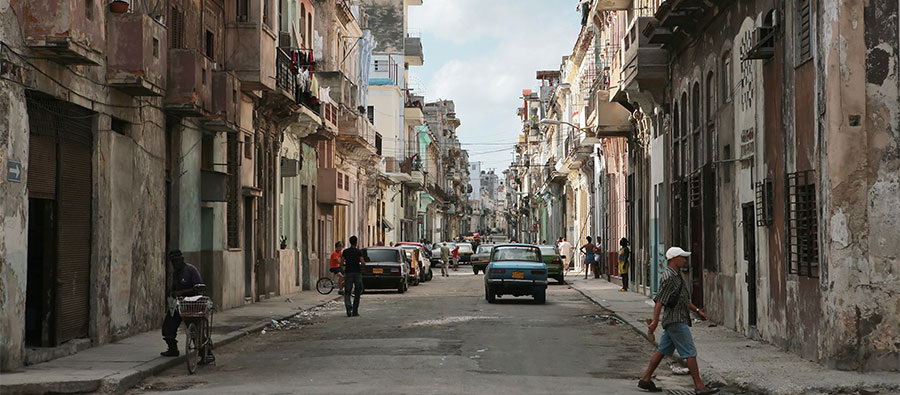
The location
Cuba is located where the northern Caribbean Sea, Atlantic Ocean, and Gulf of Mexico meet.
The people
Cuba is a multi-ethnic society numbering approximately 11 million. Cubans are renowned for their passionate, fun-loving, and gregarious natures.
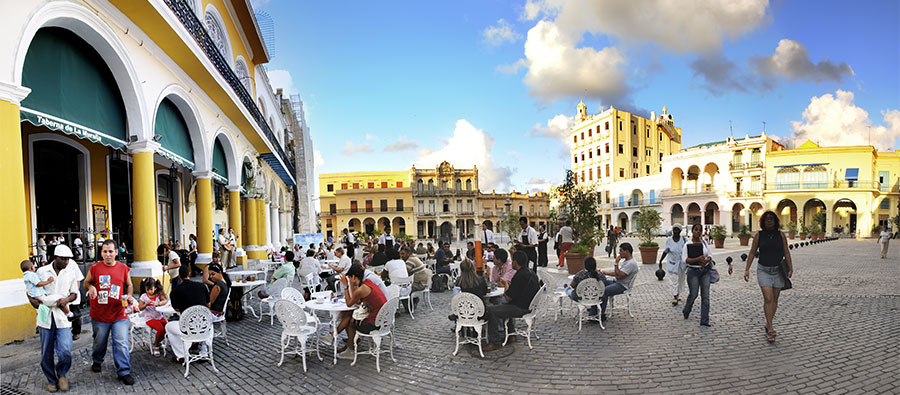
The climate
Hot and humid, Cuba’s climate is subtropical with temperatures remaining consistent throughout the year. The wet season typically lasts from May to October with an average temperature of 30 degrees Celsius (86 degrees F) in July and August and the dry season between November and April with temperatures dropping to 20 degrees Celsius (68 degrees F) in February.
Tourism
Tourism is one of Cuba’s primary industries. Cuban officials reported 2.4 million tourists in 2023. This year, it’s predicted the number of visitors will rise to 3.2 million even amidst an ongoing economic crisis.
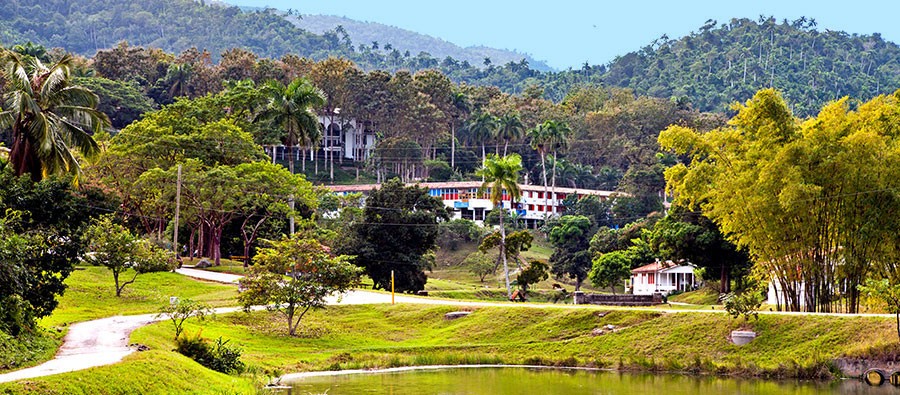
What to see in Cuba
- Old Havana
- Sierra del Rosario nature reserve
- Las Salinas saltwater lagoon
- Hanabanilla Lake
- Jardines de la Reina (Queen’s Gardens) archipelago
- Varadero
- Santiago de Cuba
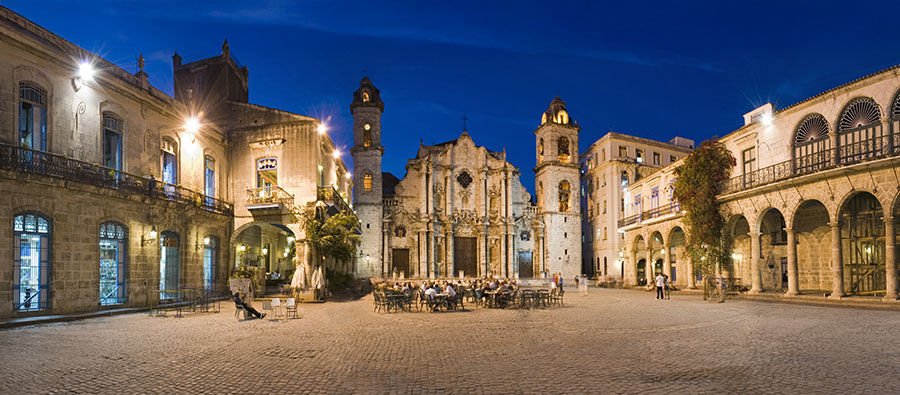
Best time to visit Cuba
The dry season is the best time to enjoy all that Cuba has to offer. From November and April, visitors can expect long sunny days. Cuba boasts a wealth of cultural events spanning the entire year. For music lovers, the internationally renowned Havana Jazz Festival takes place every January and is considered a highlight. For cigar-lovers, the Festival del Habano gets underway each February.
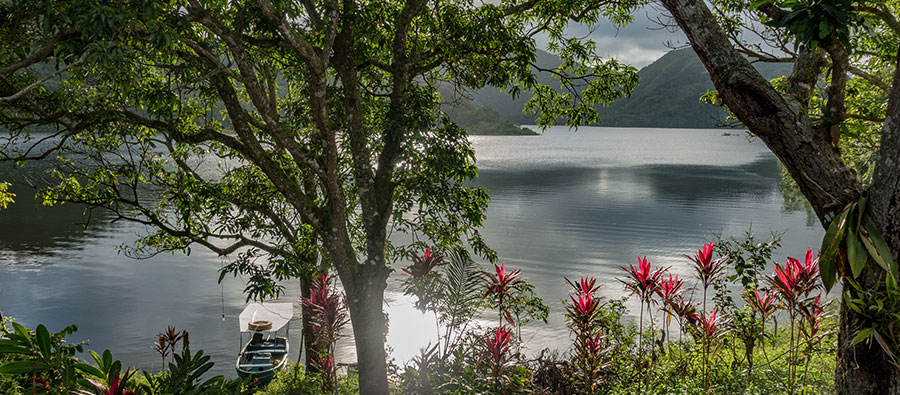
What makes Cuba unique
Cuba has many different habitats, from mountain forests to jungles and grasslands. There are even small deserts, too! These different ecosystems are home to unique plants and animals, some of which aren’t found anywhere else on Earth.
Flying private to Cuba
Chartering a private jet means you can create your unique Cuban experience and begin enjoying your trip before you even leave home. Travelling at your own pace and handpicking your schedule and activities to suit your requirements.
入境机场
Havana / José Martí International Airport
- IATA: HAV
- ICAO: MUHA
- Coordinates: N22-59.4/W082-24.6
- Elevation: 210ft.
- Magnetic variation: 04W
- Fuel types: JET / AVGAS
- Time zone: GMT -5
运行信息
- Private flights require overflight and landing permits
- Non-scheduled flights require overflight and landing permits
- U.S. Operators should check the latest regulations before planning a trip to Cuba
- UAS contract fuel available
Commercial flights
- Most major commercial airlines have regular and direct routes to a variety of Cuban destinations including Havana, Camagüey, Cayo Coco, Cayo Largo del Sur, Cienfuegos, Varadero, and Santiago de Cuba.
Immigration
Visitors who enter Cuba for tourist purposes need to get a tourist card. This includes a tourist visa. Visitors are also required to fill in an online declaration form.
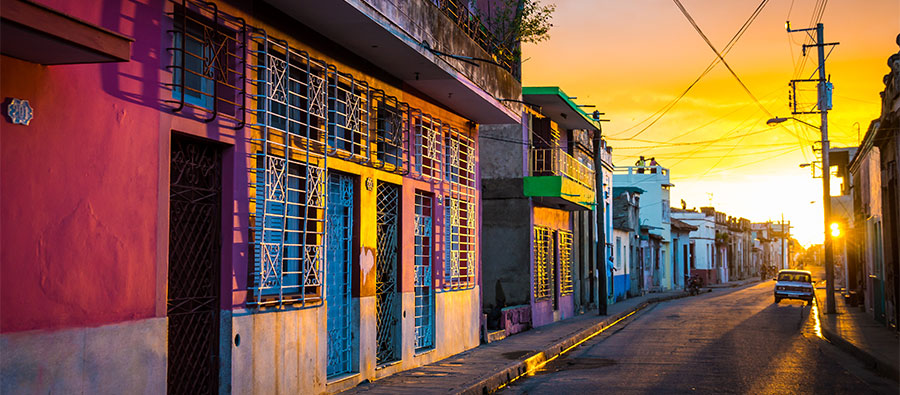
Visitor tips
- Cash is king in Cuba. ATMs are not widely available and are often unreliable. The local currency is the Cuban Peso (CUP), but US dollars and Euros is small denominations are widely accepted. Credit cards are not widely accepted outside of hotels and resorts.
- Although security guards and police were a common sight in the humming streets, visitors are advised to always take precautions with valuables.
- Consult your travel advisor and give yourself plenty of time for any travel vaccinations you may need ahead of your visit.
- Comprehensive travel insurance is mandatory for a Cuba visit.
To create your ultimate Cuba travel experience, contact UAS Charter.
如需了解更多隐藏精品,请访问UAS 博客

